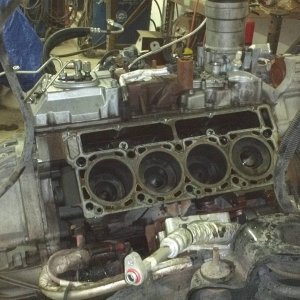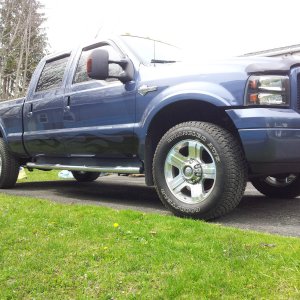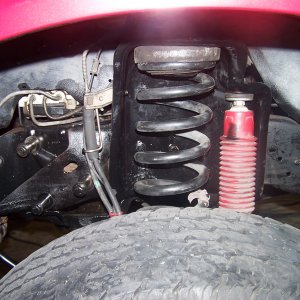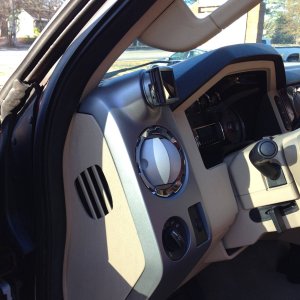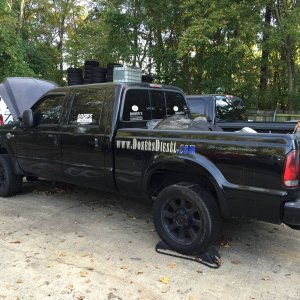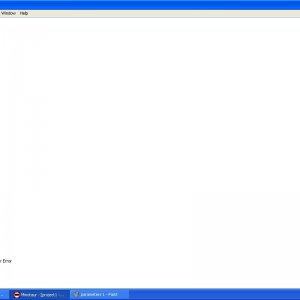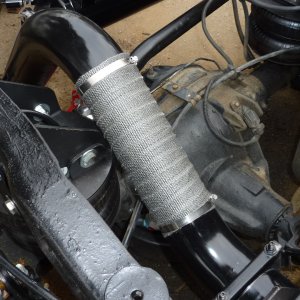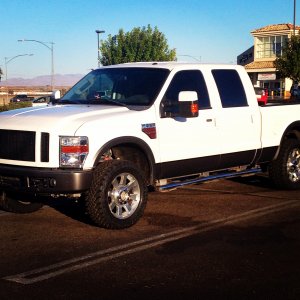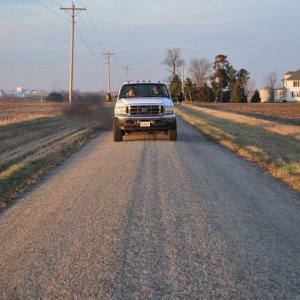Power Hungry
Member
Forward:
In light of the recent discussion(s) about different tuners and how they each handle various aspects of tuning (specifically, SOI timing control), combined with the fact that very few people have any real understanding of how the PCM calculates SOI, I am going to offer this information in an effort to clear up any of the mystery surrounding how the 7.3L PCM generates the SOI values. This thread is meant to be informative and educational, and as such is not the place to point fingers or start any type of battle between tunes/tuners from different companies. I WILL have moderators delete any posts that are neither a question, constructive, or informative.
Introduction:
In case anyone has any questions about my qualifications... We have almost 15 years of experience tuning the Ford EEC-V PCMs used in the 7.3L and created most (if not all) of the 7.3L calibrations that were available in the US until 2001, at which point TS Performance, Bully Dog, and a few other small companies became involved with the 7.3L chips and tuning. In 2000 we were the first to offer custom tuning for the 7.3L for modified injectors (actually, we tuned for modified injectors as far back as early 1999), compound turbos, and other mods. We have written and/or contributed to most of the 7.3L tuning tools and software that is (or has been) used by most of the popular tuners including Gearhead, Swamps, DP-T, BTS, Tyrant, TDP (Tony), and Bean's, as well as being used by Brian Jelich and Mike Ontiveros. We have the only 7.3L simulation software that will accurately provide output maps of SOI, ICP, and PWM as the PCM would calculate them. We also have the only diagnostic equipment that can correctly log actual SOI values from the OBDII port, which we have used to substantiate the graphs generated during PCM simulation. We have used real-time emulators to trace and follow the PCM functions to determine how each function/map inter-relates with other functions/maps. We have dynoed and CP-tested a variety of engine/injector configurations and not only have a solid understanding of how the PCM functions to generate SOI, but also how SOC (Start of Combustion) is related to SOI, ICP, EOT, Boost, Injector configuration (Split, Single, Hybrid, etc.), and Injector nozzle size.
Overview:
The purpose of this thread will be to provide clear, concise examples of how the PCM generates the final SOI values which are sent to the IDM and ultimately the injectors. We also plan to provide a clearer picture on how the relationship between tuning and specific modifications can affect SOC. We will be providing substantive graphical data (maps) to support our findings and will welcome any questions, either in general, or about any specific data we provide. All graphical data provided will be from either completely stock calibrations, or from calibrations in our own library. We will not be providing graphs of the actual tuning maps themselves, as this may only cause confusion if they are not properly assessed in relation to other maps. We, instead, will provide the calculated output graphs generated through our simulation software and we'll be happy to consider other data requests. We will not be posting any actual tuning graphs from a competitor's product without first receiving authorization to do so, so DO NOT ASK unless you have authorization. However, if anyone has a file they'd like analyzed we will consider posting the calculated values generated by the simulation software.
That's about it. I'll start posting the graphs and other information shortly.
Stay tuned...
:fordoval:
In light of the recent discussion(s) about different tuners and how they each handle various aspects of tuning (specifically, SOI timing control), combined with the fact that very few people have any real understanding of how the PCM calculates SOI, I am going to offer this information in an effort to clear up any of the mystery surrounding how the 7.3L PCM generates the SOI values. This thread is meant to be informative and educational, and as such is not the place to point fingers or start any type of battle between tunes/tuners from different companies. I WILL have moderators delete any posts that are neither a question, constructive, or informative.
Introduction:
In case anyone has any questions about my qualifications... We have almost 15 years of experience tuning the Ford EEC-V PCMs used in the 7.3L and created most (if not all) of the 7.3L calibrations that were available in the US until 2001, at which point TS Performance, Bully Dog, and a few other small companies became involved with the 7.3L chips and tuning. In 2000 we were the first to offer custom tuning for the 7.3L for modified injectors (actually, we tuned for modified injectors as far back as early 1999), compound turbos, and other mods. We have written and/or contributed to most of the 7.3L tuning tools and software that is (or has been) used by most of the popular tuners including Gearhead, Swamps, DP-T, BTS, Tyrant, TDP (Tony), and Bean's, as well as being used by Brian Jelich and Mike Ontiveros. We have the only 7.3L simulation software that will accurately provide output maps of SOI, ICP, and PWM as the PCM would calculate them. We also have the only diagnostic equipment that can correctly log actual SOI values from the OBDII port, which we have used to substantiate the graphs generated during PCM simulation. We have used real-time emulators to trace and follow the PCM functions to determine how each function/map inter-relates with other functions/maps. We have dynoed and CP-tested a variety of engine/injector configurations and not only have a solid understanding of how the PCM functions to generate SOI, but also how SOC (Start of Combustion) is related to SOI, ICP, EOT, Boost, Injector configuration (Split, Single, Hybrid, etc.), and Injector nozzle size.
Overview:
The purpose of this thread will be to provide clear, concise examples of how the PCM generates the final SOI values which are sent to the IDM and ultimately the injectors. We also plan to provide a clearer picture on how the relationship between tuning and specific modifications can affect SOC. We will be providing substantive graphical data (maps) to support our findings and will welcome any questions, either in general, or about any specific data we provide. All graphical data provided will be from either completely stock calibrations, or from calibrations in our own library. We will not be providing graphs of the actual tuning maps themselves, as this may only cause confusion if they are not properly assessed in relation to other maps. We, instead, will provide the calculated output graphs generated through our simulation software and we'll be happy to consider other data requests. We will not be posting any actual tuning graphs from a competitor's product without first receiving authorization to do so, so DO NOT ASK unless you have authorization. However, if anyone has a file they'd like analyzed we will consider posting the calculated values generated by the simulation software.
That's about it. I'll start posting the graphs and other information shortly.
Stay tuned...
:fordoval:



